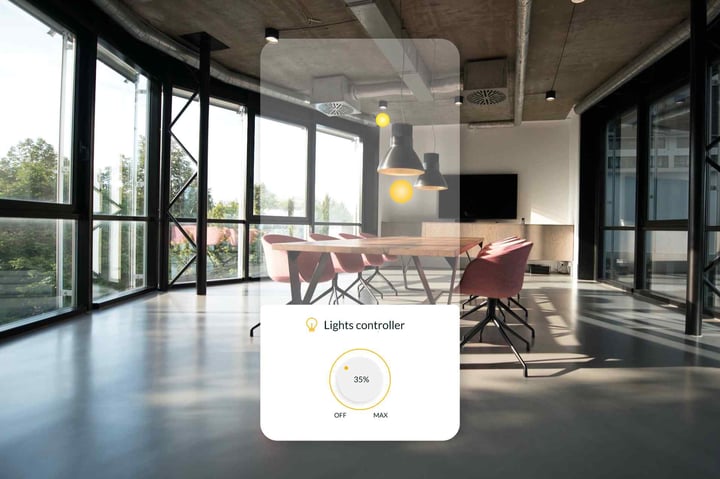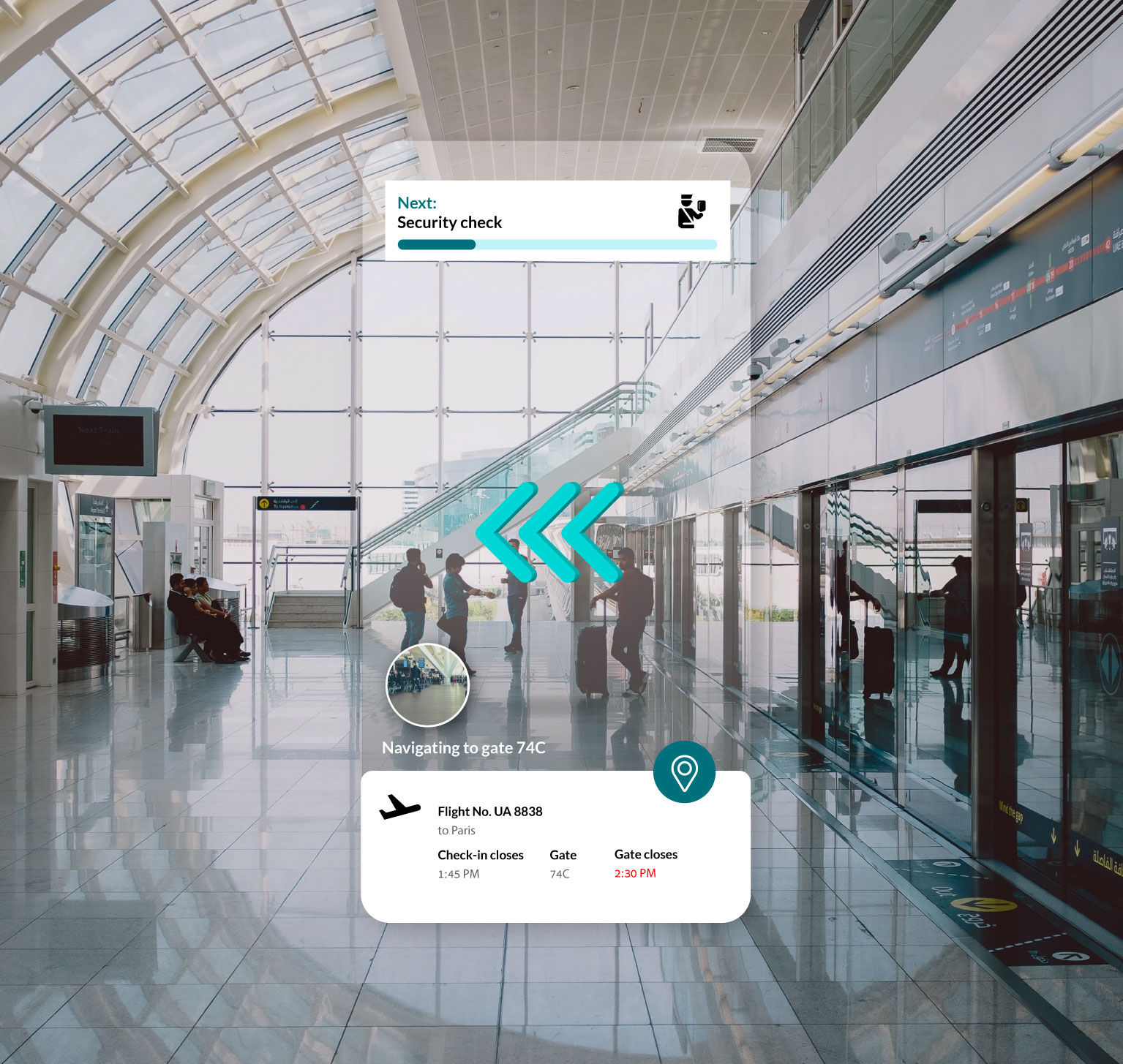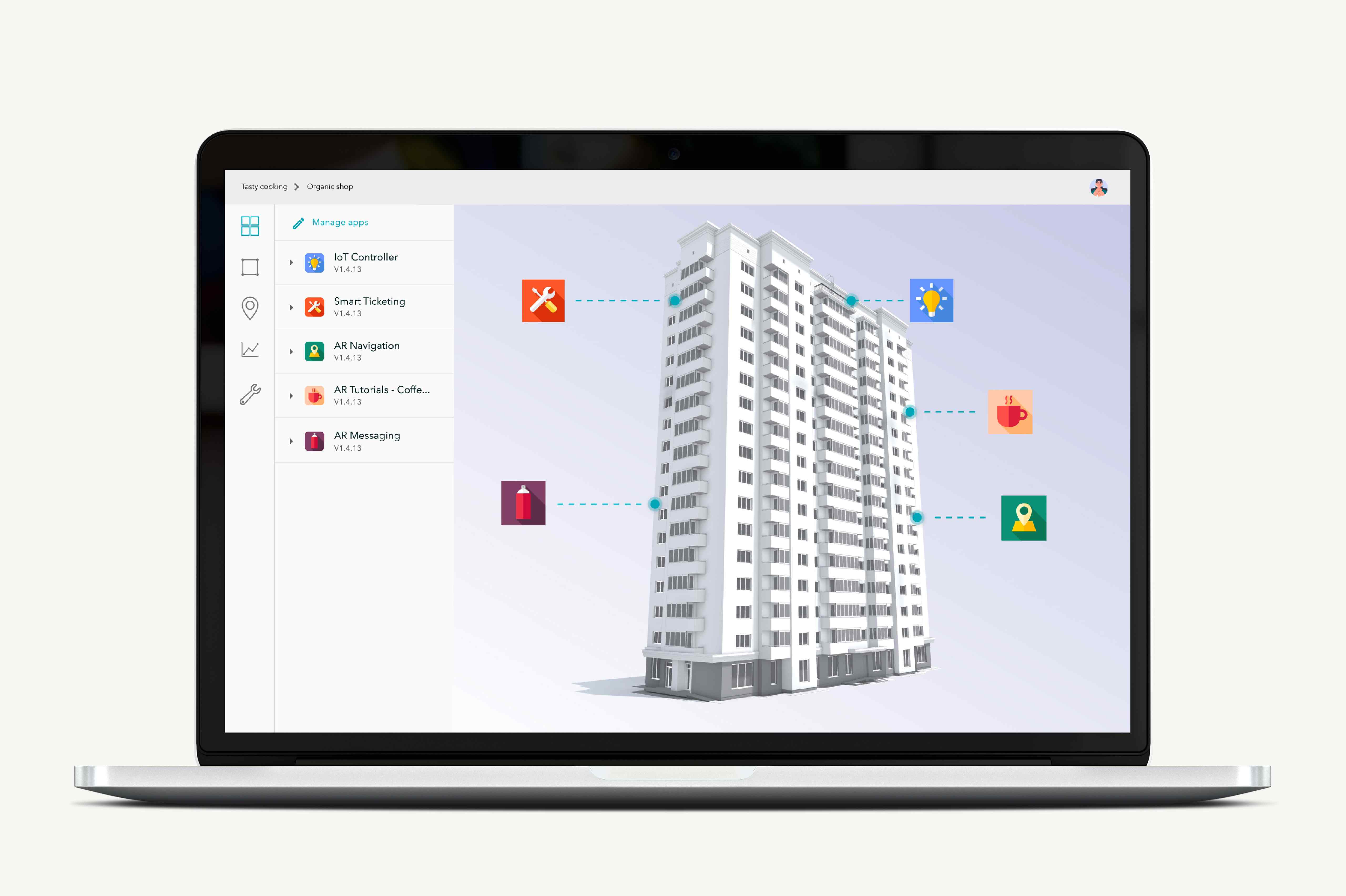Smart Buildings 101: How IoT and AR Are Revolutionizing Commercial Space
Smart buildings let enterprises optimize and refine every aspect of the workspace while saving money and maximizing day-to-day performance

Today’s commercial spaces can be more than four walls and a foundation. By leveraging modern technologies, it’s possible to transform any installation into a smart building that optimizes space, minimizes energy use, and enhances day-to-day performance. In this article, we’ll take a closer look at smart buildings and the myriad ways technology like augmented reality and the internet of things benefits commercial enterprises.
Want to learn more? Check out our ultimate guide, What is a Smart Building?
Jump to a section
Leveraging digital twin technology
How Vera can deploy your smart building
What is a smart building?
Smart buildings are buildings, installations, or facilities with integrated technology systems that assist occupants with day-to-day functions such as building automation, telecommunications, facility management, and much more. By themselves, these individual systems do not “create” a smart building, however. True smart buildings unify and refine processes to enhance efficiency and offer actionable data insights.
For example, an office with an integrated air conditioning system is not a smart building. However, if that air conditioning system operates in tandem with:
- Automated processes for managing temperatures in each room
- Control systems with on-site access and online connectivity
- Data-reporting tools that monitor energy efficiency...
Now you have a smart building where systems operate in tandem to produce the most optimal outcomes for all occupants.
Why create a smart building?
Smart buildings are more than technological conveniences. By designing a building around optimized processes or by upgrading an existing facility, smart buildings generate impressive benefits that would not be possible in traditional structures.
- Eliminates inefficiencies: In a smart building, facility managers have in-depth access to subsystems that let them consolidate processes and maximize efficiencies. In a commercial setting, smart building systems can measure productivity or streamline everyday tasks.
- Saves time and money: Any effort to reduce inefficiencies can help a business save resources — the most significant of which are time and money. Smart buildings are an excellent tool for increasing efficiency and optimizing work processes. The technology powering them also tends to improve the overall monetary value of a property.
- Optimizes energy use: Smart buildings are ideally suited to optimizing the energy efficiency of any installation. Along with the savings described above, this can help energy-intensive facilities take great strides towards becoming carbon-neutral.
Smart buildings and IoT
Smart buildings were mainly within the realm of science fiction until the internet of things (IoT) — a network of online-connected, physical objects — was born. If you’ve ever tracked athletic activity with a Fitbit or played music through a smart speaker, you’re familiar with IoT technology. When individual devices on a network are interconnected with sensors, they can provide a complete picture of any physical space. From there, all you need is an interface that transmits commands back to each sensor device, and you have a smart building that one can operate from any smartphone.
In a commercial or enterprise setting, workplaces use smart building IoT configurations to control a variety of building functions remotely. Here are just a few examples:
- Lighting: Lighting systems might activate and deactivate as workers move between rooms to reduce energy waste.
- Audiovisual equipment: Employees can control A/V displays from an app to avoid cluttering a space with extraneous interfaces or equipment.
- Fire alarms: Security staff can manage fire systems and alarms remotely when it is unsafe to enter specific areas.

Smart buildings and AR
Smart buildings have existed in various forms since the 1980s, but new technologies can enhance their capabilities even further — particularly augmented reality (AR). AR refers to any interface that superimposes computer-generated images over a view of the real-world. Smartphone games like Pokémon Go are a popular example, but enterprises can also leverage AR in smart buildings for commercial purposes:
- AR wayfinding: Visitors and new employees often have difficulty navigating through complex structures. AR can provide GPS-like navigation or directional pointers that guide users to the right location. Museums and parks can expand on these functions to provide services like guided tours.
- Employee training: AR can show workers how to operate complex equipment in real time. These functions speed up the onboarding process and make it easier for employees to recall each operational step.
- Entertainment: Gamified AR systems are immensely popular and relatively easy for enterprises to integrate with a smart building. Theme parks might offer AR photo opportunities or scavenger hunt mini-games that entertain guests waiting in long lines.
Leveraging digital twin technology
The possibilities for AR in commercial buildings are only limited by imagination, but implementing them is relatively straightforward. Enterprises use digital twin technology to create virtual facility models, digitizing everything from layout to physical processes. If a digital twin mirrors a physical location with a high degree of accuracy, it becomes possible to run detailed simulations and analyze the results. These processes can help generate AR environments and be used to test changes to the physical environment.
Digital twins may consist of two-dimensional floor plans, but modern enterprises increasingly use 3D meshes for smart buildings. Doing so provides a higher level of detail that is useful for representing product placement, foot traffic, and much more.

How Vera can improve your smart building
If your facility contains smart building technology, Resonai and Vera can help. Vera is our AI platform for digitizing and managing physical spaces, enabling facilities managers to deploy a number of exciting and engaging AR applications for tenants and visitors. Meanwhile, the Vera admin console provides a single, intuitive interface to manage all of your smart building devices and systems in one place, with integrated analytics for disparate data silos. We digitize, automate, and connect all your smart devices so you can visualize the systems, manage them remotely, and launch new apps.
Vera is ideally suited for the retail and entertainment industries, along with any enterprise seeking a facilities management solution. If you’d like to learn more, get in touch with Resonai today for a free demonstration.
Subscribe to Our Newsletter!
Read More
What Is Smart Building Architecture?
As the saying goes, the three things that matter most in real estate are “location, location,...
Resonai Team Spotlight: Dana Shamir, Software Developer
The field of augmented reality provides ample opportunities for a large spectrum of today’s...
What Are Intelligent Buildings? A Beginner’s Guide to Digital Facilities
As technology advances, our physical surroundings are becoming more complex. Any given room can...